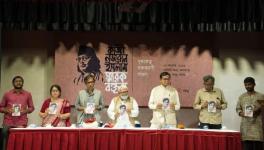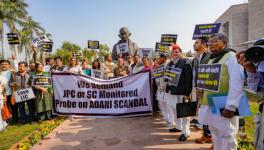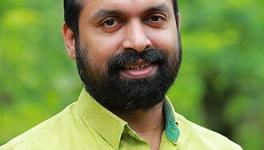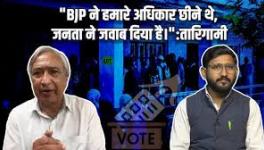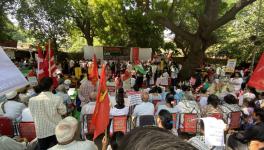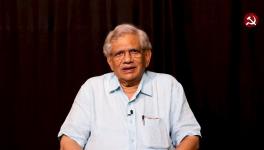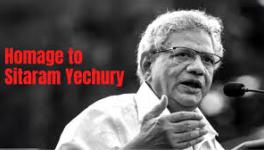Why One State in India Is Showing Promising Signs of Democracy as the World Goes More Authoritarian
Just before the state elections in Kerala, in southern India, a television channel ran a program called “The Great Political Kitchen.” The anchor went to kitchens across the state to talk to homemakers about their views on politics. In one kitchen, the anchor asked a woman about a dispute surrounding a temple in southern Kerala where the courts had ordered that women must be allowed full access to the temple premises in 2018. For the past five years, Kerala had been governed by the Left Democratic Front (LDF), which had taken a democratic position over this issue and had supported the entry of women into this famous temple. The right wing claimed this was evidence that the LDF government was against religious freedom; such a claim would not be restricted to the majority-Hindu population but could also be extended to other minority communities in India such as Christians and Muslims. The woman told the TV anchor, “I am a devotee [of the temple], but hunger won’t go away if I cook and eat devotion. That’s all I have to say about it.”
Her response—which went viral—conveyed the mood of the recent election in Kerala, which was won by the LDF. The LDF won 99 of the 140 seats in the Kerala assembly elections; 67 of these seats were won by candidates of the Communist Party of India (Marxist). It was the first time since 1980 that an incumbent party or coalition had been able to win a second consecutive term in Kerala.
Most people in Kerala were uninterested in the dangerous flippancy of the right-wing politics represented by the Bharatiya Janata Party—in power at the center in India—which is keener to talk about anything other than issues that concern people’s material conditions of life such as the pandemic and its social impact on their lives. The LDF leadership, on the other hand, has been focused on the pandemic and on providing the materials necessary for relief to the people in the state during the second wave of the COVID-19 crisis that the country is witnessing presently. Mass organizations of the Left and community organizations joined the state government in efforts to take care of the people. As a result, Kerala has so far been able to tackle the pandemic crisis better than other parts of India.
Pandemic Relief
A comprehensive poll by the Center for the Study of Developing Societies (CSDS) and Lokniti shows that 73 percent of those polled said that they were satisfied by the performance of the state government. Led by Kerala Chief Minister Pinarayi Vijayan, the LDF government’s first term, from 2016 to 2021, was wracked by natural disasters (a cyclone in 2017 and floods in 2018 and 2019) and virus outbreaks (the Nipah virus in 2018 and the coronavirus pandemic), which have impacted lives globally. The government dealt with each of these crises in a similar fashion: through calm and scientific assessments of what had occurred, combined with announcing generous relief for the impacted people. This was true in all the calamities before the COVID-19 pandemic, especially during the 2018 floods, which were the heaviest in a century.
The CSDS-Lokniti poll shows that the electorate went to vote with the good governance of the LDF in mind. Asked about the LDF government’s performance in dealing with the pandemic, 72 percent said that it was either “good” or “very good.” A remarkable 88 percent said that they were satisfied with the food kits distributed by the government to ensure that no one went hungry during the crisis.
Contrary to the attitude of the right-wing government of India’s Prime Minister Narendra Modi, the LDF government of Kerala adopted a science-based approach to tackle the pandemic. It expanded public health care facilities to meet likely increases in the number of cases. It carried out a vigorous “Break the Chain” campaign, urging people to adopt the basic practices (social distancing, washing hands and wearing masks) that are necessary to prevent the spread of the virus. Testing and treatment for COVID-19 in Kerala’s government hospitals have been free and available to everyone who needs it.
To prevent mass suffering during the pandemic, the LDF government got the state’s self-government institutions—which have been strengthened over the past few decades due to the efforts of Left governments—to cook and deliver food to those in need. The government provided food grain and grocery kits for free to every household to prevent hunger. The trade unions and mass organizations helped run these community kitchens as well as helped set up quarantine facilities and treatment centers.
Infrastructure
The right wing in Kerala has typically claimed that the Left is not equipped to build the state’s infrastructure. But this time, the right wing had no grounds to make its typical complaints. Since 2016, the state government has not only improved the basic transportation infrastructure but has also built up other kinds of infrastructure needed by the working class and the peasantry.
There is a conventional attitude that suggests infrastructure is built to promote the interests of business alone. But this is not the case in the way Kerala’s LDF government built its public infrastructure, including public housing—the government built 250,000 homes for the poor. There was a major focus on public education and public health care, both of which were enhanced, and a stronger public health care system in the state helped it to stave off the catastrophe that COVID-19 has wrought in the rest of India. For the first time in 25 years, students left private schools to return to the improved public education system. Improvements in facilities in public schools included providing sanitary pads for girls to encourage better attendance in school.
Roads, bridges, power lines, and a massive public sector internet project (Kerala Fiber Optic Network, or K-FON) to provide internet as a basic right to citizens have been a few of the key elements of the government’s infrastructure work.
Election manifestos are often not taken seriously; this is, however, not the case with the LDF government. “We have fulfilled 580 out of the 600 items in the 2016 manifesto. Now we are placing before the people a manifesto with 900 promises,” Chief Minister Vijayan said in March.
900 Promises
The pressing task for the LDF government is the same as before the election: to bring the second wave of COVID-19 infections under control. The Indian government of Prime Minister Modi has been hopeless, allowing the infection to run rampant while doing little to either build up the public health care system or to provide a proper vaccination program. In the first week of May, the seven-day average of doses of COVID-19 vaccines administered in India was 1.9 million. At this pace, it will take until February 2024 to administer two doses of the vaccine to the entire adult population of the country.
Kerala’s government is forced to buy vaccines on the open market. An important takeaway from this pandemic has been the need for the state to redouble its efforts to strengthen its public sector enterprises, such as the Kerala State Drugs and Pharmaceuticals Limited, which has been producing essential drugs at low prices for the government hospitals in the state. Kerala currently has a lockdown in place to bring down the rate of infection, which has been high due to the more contagious variants of coronavirus, including the triple-mutant Indian variant, that have been infecting people.
The CSDS-Lokniti poll showed that the working class and the poor as well as oppressed castes, including Dalits, voted overwhelmingly for the LDF; there is no doubt that their interests will play a leading role in shaping the government policy. That is why the LDF returns to power with a mandate to end absolute poverty by the formulation of micro-plans that target families who live with extreme poverty, including homelessness.
Hunger can’t be eradicated by devotion. Only social action can eradicate hunger and hopelessness.
This article was produced by Globetrotter.
Vijay Prashad is an Indian historian, editor and journalist. He is a writing fellow and chief correspondent at Globetrotter. He is the chief editor of LeftWord Books and the director of Tricontinental: Institute for Social Research. He is a senior non-resident fellow at Chongyang Institute for Financial Studies, Renmin University of China. He has written more than 20 books, including The Darker Nations and The Poorer Nations. His latest book is Washington Bullets, with an introduction by Evo Morales Ayma.
Subin Dennis is an economist and a researcher at Tricontinental: Institute for Social Research’s New Delhi, India, office.
Get the latest reports & analysis with people's perspective on Protests, movements & deep analytical videos, discussions of the current affairs in your Telegram app. Subscribe to NewsClick's Telegram channel & get Real-Time updates on stories, as they get published on our website.









